Botanical art has a classic appeal. There is something essential about the clean accuracy of a detailed depiction of a plant that has been chosen to represent its species, coupled with the aesthetic qualities that emerge from the union of technique, artistry and natural beauty.
Currently, as Covid-19 infection rates are surging in many parts of the world, including in the region where I live, many of us turn to items of nostalgia to comfort ourselves at moments of wistful longing for pre-pandemic times.
Because of my fondness of old botanical prints I wondered if I could adapt some of my photographs of plants and flowers so as to form images with some kind of resemblance to botanical art.
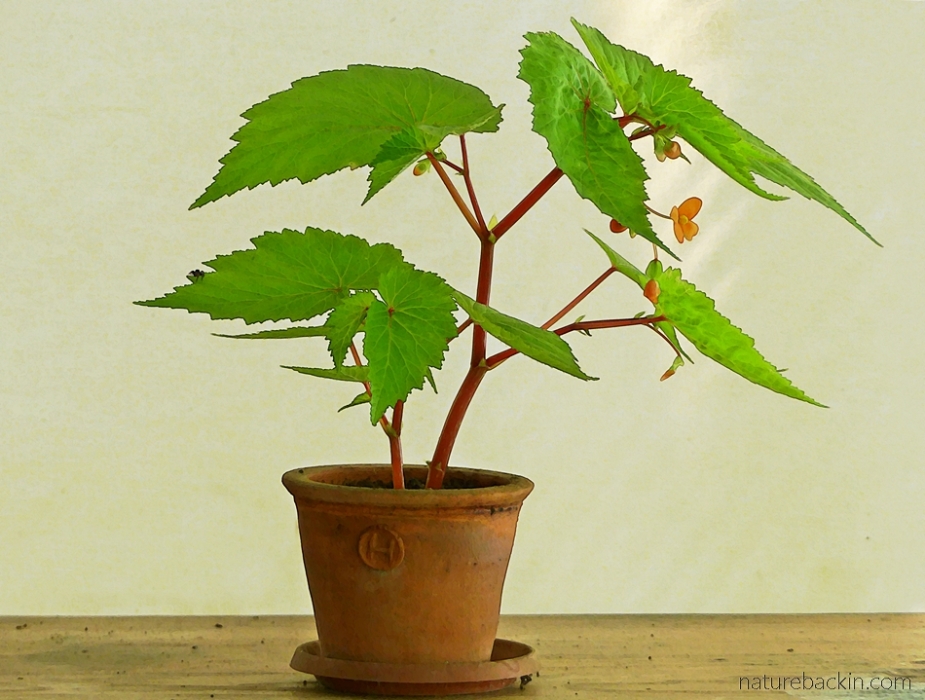
Most botanical art has clean, often white, backgrounds. Most of my photographs do not, as they are of plants where I find them and not separated from their contexts. However some time back, I did place my potted Wild Orange Begonia (Begonia sutherlandii) in front of a screen, showcasing the structure of the plant and the shape and texture of its leaves.
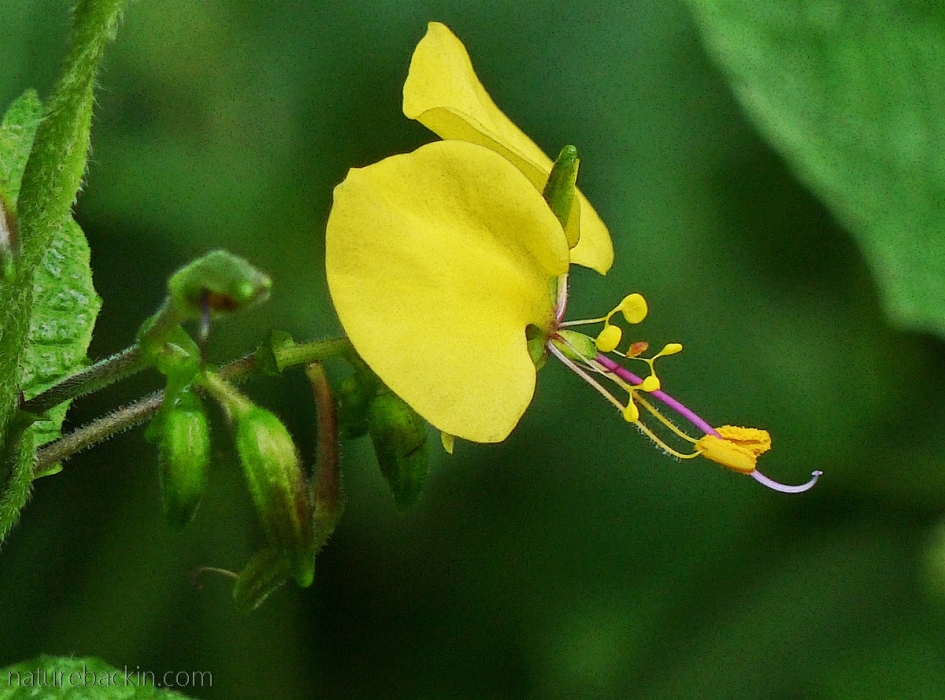
Much botanical art utilizes watercolours and so I experimented with processing my images using a photo editor (PhotoScape) to suggest the use of watercolours while still retaining most of the detail in the original image, such as in this image of a flower of the clinging aneilema (Aneilema aequinoctiale).

But I found that I was unable to make my photos resemble botanical art prints in any significant way, so instead I settled for what I fancied was a slightly “vintage” look, whatever that may mean, as in this photo of a flower of the Natal bauhinia (Bauhinia natalensis).
And so instead of approaching the relative purity of botanical art, I found that my wistful nostalgia was collapsing into sentimentality, with images reminding me instead of vintage cards, such as those that I inherited from previous generations in my family.
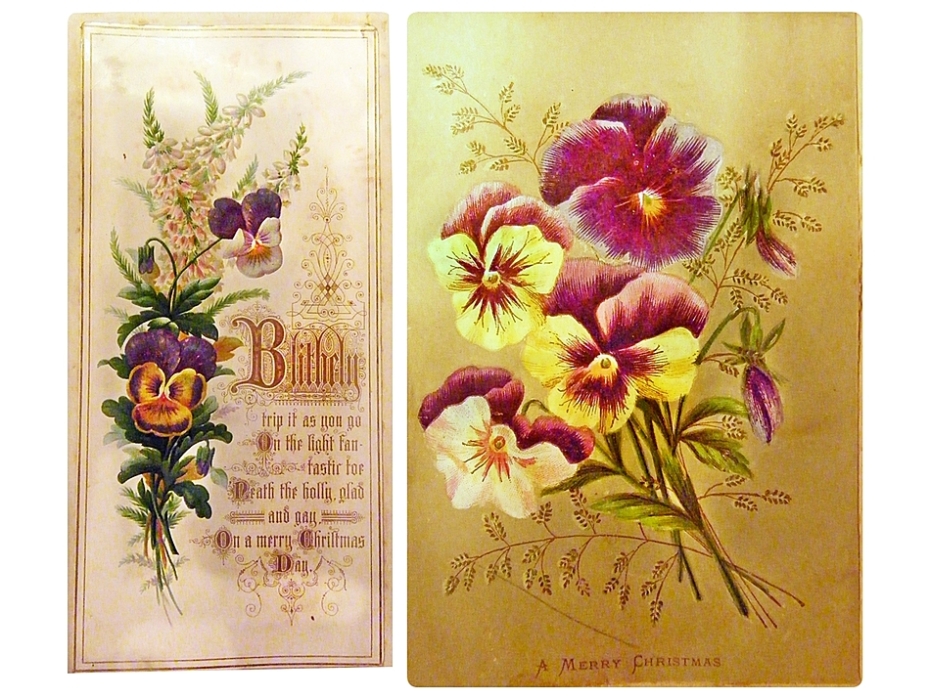
Two cards featuring pansies in my small inherited collection of Christmas and birthday cards, where some cards are rather cheesy and display less artistry than others.

Most of the cards feature plants, with many cards depicting flowers with a high degree of accuracy but they convey a kind of tacky cheerfulness or sentimentality. Yet greeting cards were (and still are) often kept by recipients as mementos of special relationships, friendships and events.

So maybe one day I will plan ahead and deliberately select, stage and photograph plants with view to representing them in the style of botanical art, but what we have here instead is more in the tradition of greeting cards and postcards with a slightly retro flavour, as in this image of a red Freesia laxa, a self-seeded plant growing in our garden
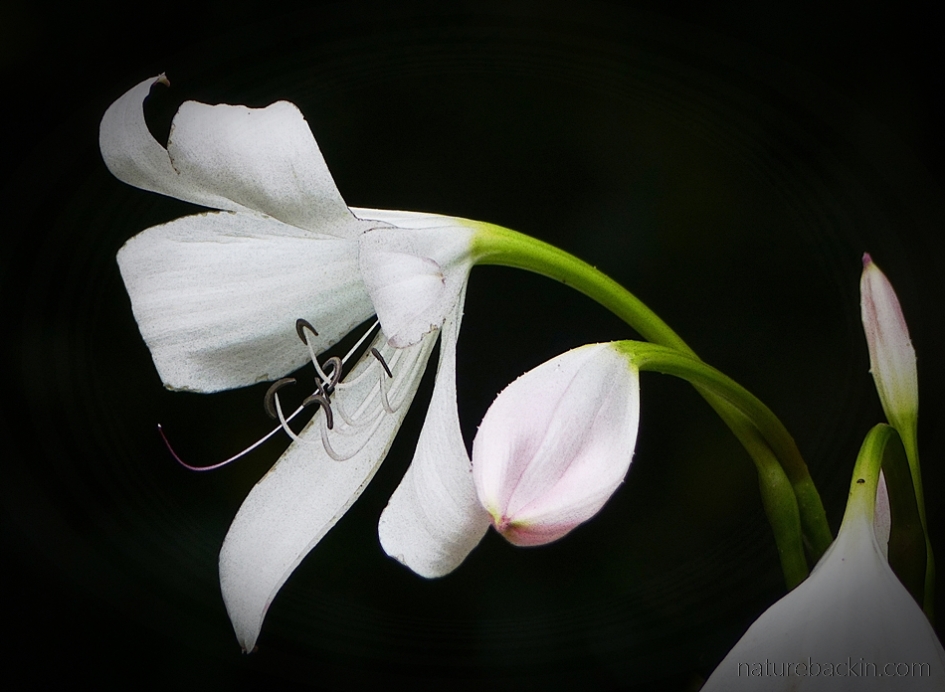
Lilies have an old-fashioned aura, and this Natal lily (Crinum moorei) is no exception.

I gave this flower of the powder-puff tree (Barringtonia racemosa), which is floating on the surface of our garden pond, a more obvious “painterly” quality.
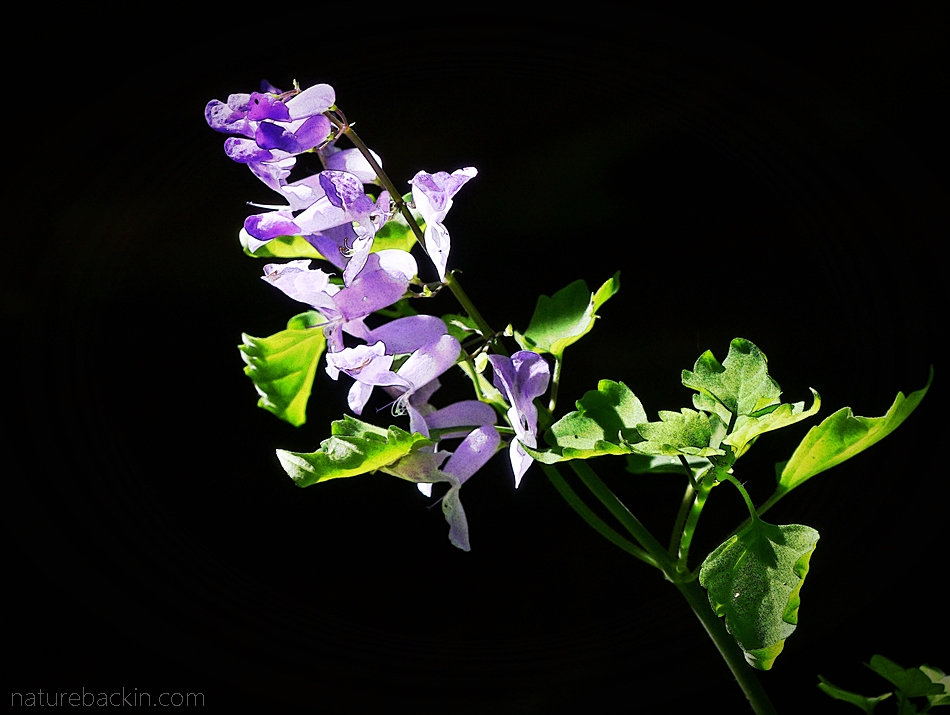
A ray of sunshine illuminates a spray of flowers of the shade-loving stoep jacaranda (Plectranthus saccatus). Because it thrives in shade it can be successfully grown as a pot plant on a shady stoep (veranda). This image at least has a plain solid background in the tradition of botanical art, although it is black rather than white.
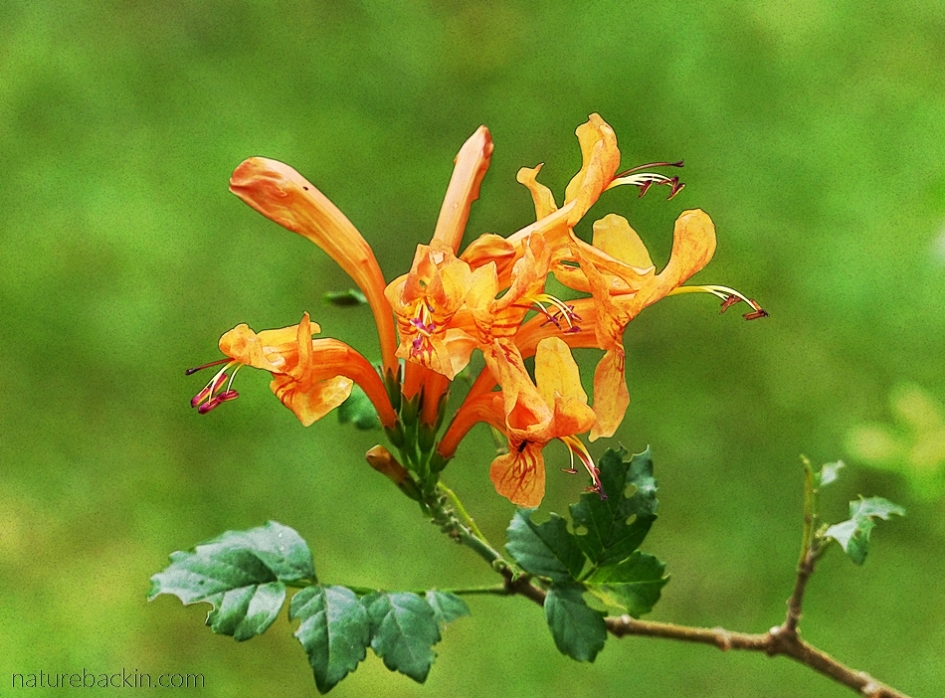
The nectar-rich flowers of the Cape honeysuckle (Tecomaria capensis) also have an old-fashioned quality. For a time the botanical name changed from Tecomaria to Tecoma because their similarities didn’t justify any distinction. But since that change, molecular studies have revealed differences significant enough to justify the separation into two genera, and so the genus Tecomaria has been reinstated based on the DNA evidence (http://pza.sanbi.org/tecomaria-capensis).

Although its resemblance to a dog rose is only superficial, the African dog rose (Xylotheca kraussiana) shares the same decorative qualities as the wild rose from where it gets its common name.

Looking like they would be at home in a Victorian lady’s posy, the spring flowers of the puzzle bush (Ehretia rigida) are a dainty lilac colour.
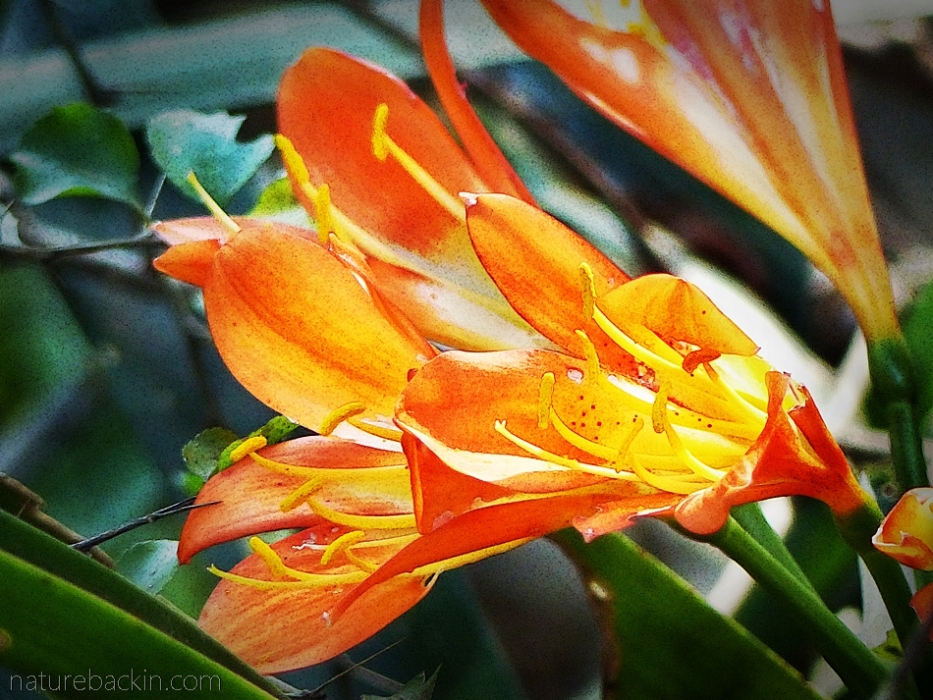
A flamboyant splash of orange and yellow, flowers of the ever popular Clivia miniata light up in a shaft of sunlight where the plant grows in dappled shade in the garden.
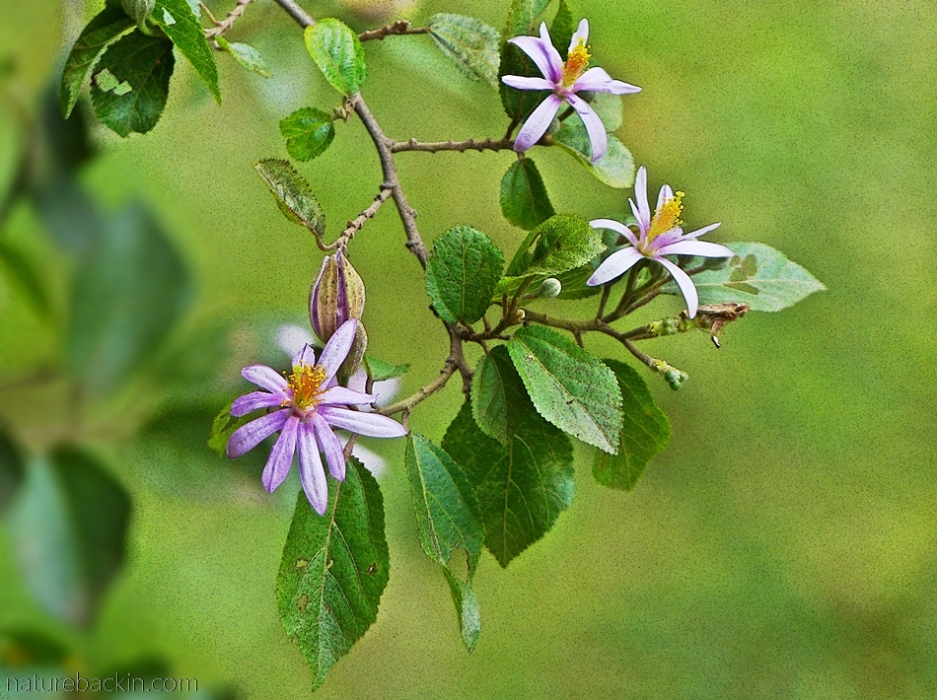
Looking sedate and gracious – a spray of early summer flowers and leaves of the cross-berry (Grewia occidentalis).
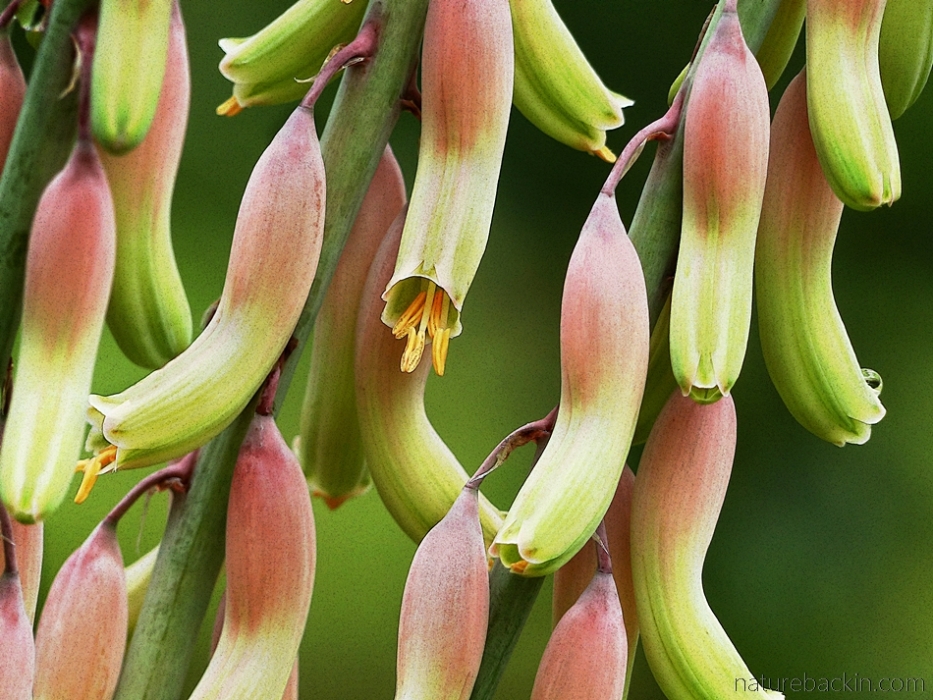
The tubular flowers of a Gasteria form a repetitive and almost abstract pattern.

The showy flowers of the river crinum (Crinum macowanii) have a more luminous quality on an overcast day.
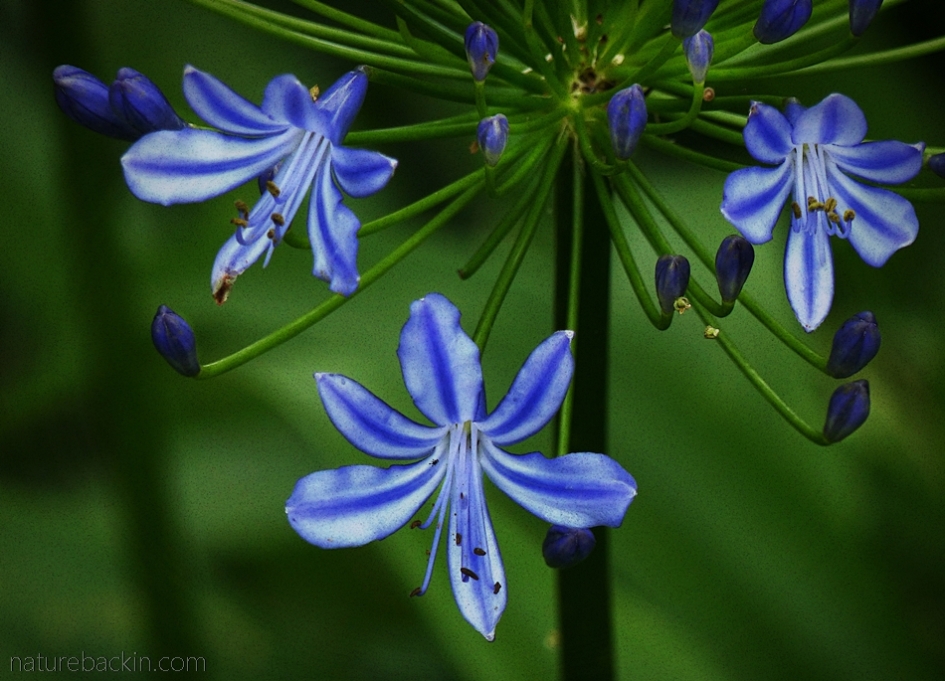
Only a few flowers on the head of an Agapanthus praecox have opened showing their stripes, with the rest of the flowers still in bud. The Agapanthus is endemic to southern Africa but a variety of cultivars and hybrids are now grown across the world – as garden plants in warmer regions and as potted plants where it is colder. In some regions, such as in Australia and New Zealand, it has naturalised and become invasive. Even though it is not a lily (it is the only genus in the family Agapanthaceae) it is known in Europe and America as the African lily, and sometimes as the Nile lily even though it is a southern African plant growing far south of the Nile river (http://pza.sanbi.org/agapanthus-praecox).

Looking somehow stylised although naturally so, the bright orange flowers of the Crocosmia aurea, known as falling stars or montbretia, appear luminous against the dark background.
Perhaps the images in this post can best be seen as greeting cards sending out best wishes to all readers wherever you are.
Posted by Carol

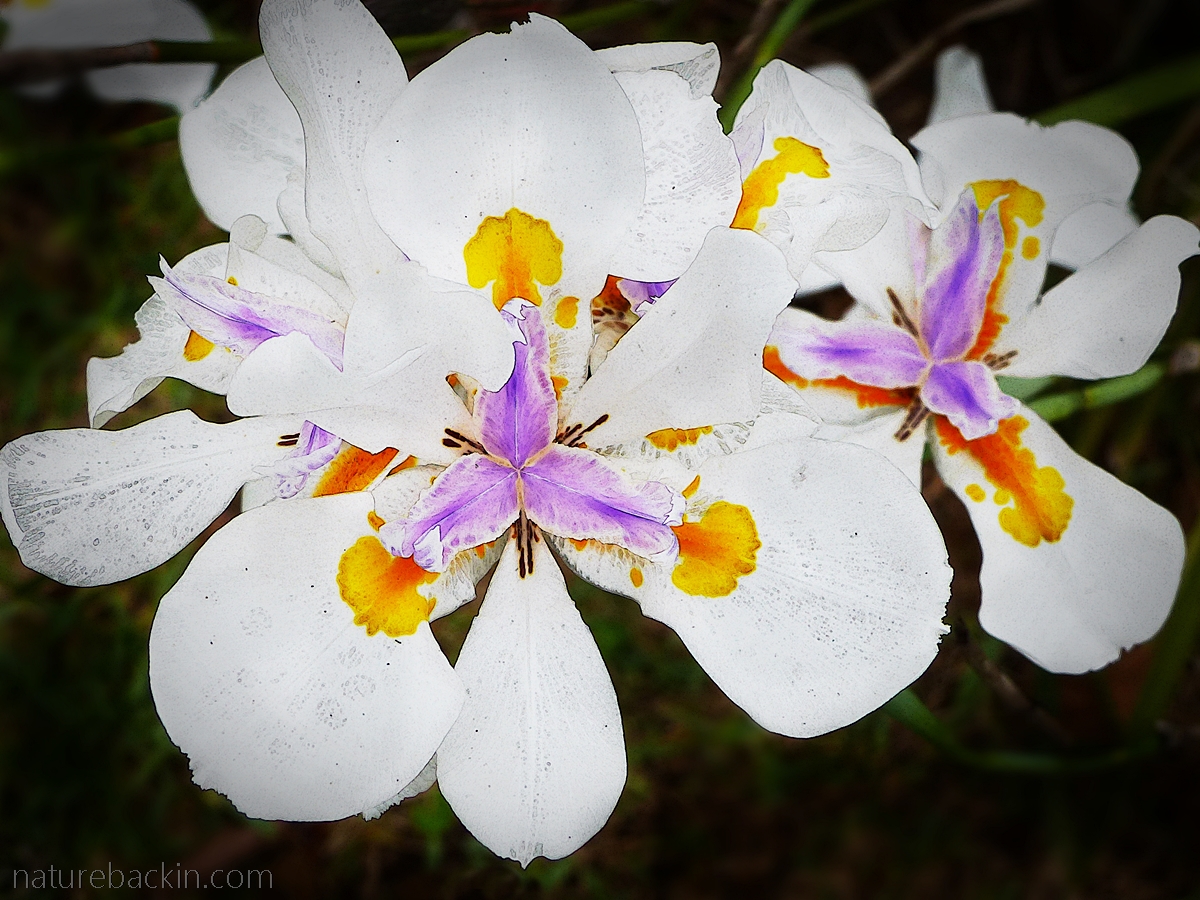







August 5, 2020 at 9:10 am
I thoroughly enjoyed this post, Carol. There’s so much we can do as we ‘muck about’ with photos but I was rather pleased that your efforts took you down different paths. I’m sure in time you will be showing us ‘botanical print’ photographs – a great project for while you’re restricted in travelling – but the different effects in this collection are beautiful.
LikeLiked by 2 people
August 5, 2020 at 5:36 pm
Thanks very much Sandra. I quite enjoyed the unexpected ways things turned out and it has made me want to ‘muck about’ a bit more with photos in my collection.
LikeLiked by 2 people
August 1, 2020 at 4:46 am
What a delightful idea and attempt! Have to say my favorite was the powder-puff tree blossom. You might be pleased to know that our Agapanthus is growing, blooming and spreading nicely since I moved a specimen from our previous garden.
LikeLiked by 2 people
August 5, 2020 at 5:23 pm
Thanks Gunta. I am also fond of the powder-puff tree blossom. Seems some South African plants might be taking over the world!
LikeLiked by 1 person
August 1, 2020 at 1:48 am
Dear Carol, Your selection of stunning photography speak to the heart, much in the way cards used to when received! A beautiful colour burst to greet my day. Thank you! xxx
LikeLiked by 2 people
August 5, 2020 at 5:21 pm
Thanks very much Christeen. Like so many other things, greeting cards have mostly migrated to being online. I think there will be fewer mementos to pass down through the generations going forward …
LikeLiked by 2 people
July 31, 2020 at 9:25 am
These are beautiful Carol – very creative and all the results are proof of your artistic eye. I love all of them but the White African dog rose is my favorite!
LikeLiked by 2 people
July 31, 2020 at 8:14 pm
Thanks Carol – lovely of you to say that especially as your botanical art is so good (and the real deal). The African dog rose does fit the style and I like that image too.
LikeLike
July 31, 2020 at 8:33 am
Exquisite. Thank you for the bouquet
LikeLiked by 2 people
July 31, 2020 at 8:11 pm
Thanks Mariss.
LikeLike
July 31, 2020 at 7:17 am
Tricky to reproduce those old postcards, but your flower images are a lovely attempt. There’s probably an app somewhere that will do it for you, which is rather depressing to think about. Still, you have so may beautiful flowers in your garden. It’s a treasure.
LikeLiked by 2 people
July 31, 2020 at 8:10 pm
There is likely an app for that! I wasn’t really trying to reproduce old postcards – it was just that as I started realising that I couldn’t adapt my photos to the conventions of botanical prints and I became aware of a certain rather corny sentimentality is some of the images that their similarity to greeting cards rather than the hoped for botanical art came to mind 🙂
LikeLiked by 1 person
August 1, 2020 at 4:31 am
There’s probably a botanical print app, too!
LikeLiked by 1 person
August 5, 2020 at 5:21 pm
🙂
LikeLike
July 31, 2020 at 6:28 am
This is fascinating and is a testimony to your patience and creativity – what a refreshing take on our natural bounty!
LikeLiked by 2 people
July 31, 2020 at 7:59 pm
Thanks very much Anne. I couldn’t think what to blog about this week and then the botanical print idea popped up so I decided to give it a try.
LikeLiked by 2 people
July 31, 2020 at 5:53 am
Such a delightful read, yet again. I love how, these pictures take me right into your garden, and transport me away from the drama of the world right now. Thank you Aunty Carol.
Much love 💕
LikeLiked by 2 people
July 31, 2020 at 3:23 pm
Thanks Debs. Sometimes it can seem a bit bizarre to retreat into the garden in these times of crisis, but we all need some kind of respite where we can find it in these anxious times.
I hope you are all keeping safe, Sending love to you all 💖
LikeLiked by 1 person
July 31, 2020 at 5:32 am
I hope you had fun with your self-imposed project, because I’ve really enjoyed this, and seeing how you tackle the various restrictions of the form. The results are lovely. You’ve got a whole stack of greetings cards ready and waiting! Thanks for sending them to your loyal readers first!
LikeLiked by 2 people
July 31, 2020 at 3:18 pm
The various restrictions of the form is a good way of putting it. I think that that is what appeals about any genre – becoming familiar with the conventions and seeing what can be achieved with the limits of the form. But I found that I could not easily meet the requirements for botanical art prints and so slid into something rather more like greeting card territory 🙂 However, I did try to sustain a kind of retro feel and that was quite fun.
LikeLiked by 2 people
July 31, 2020 at 3:22 pm
Yes, fun for you and fun for us at the receiving end. Maybe I’ll start to ‘muck about ‘ with photos more?
LikeLiked by 1 person
July 31, 2020 at 3:26 pm
Nice to know that it was fun too see what my little exercise came up with, especially as it turned out to differently to what I hoped for. I think I might ‘muck about’ with more photos too. I often think about those moody monochrome photos of country scenes that you featured a few weeks back. I think they captured a very definite feel of times past.
LikeLike
July 31, 2020 at 3:35 am
These are so beautiful, Carol. I especially like the river crinum.
LikeLiked by 2 people
July 31, 2020 at 3:07 pm
Thank you Sandy. There is something about lilies and similar flowers – they have a particular aura somehow.
LikeLiked by 1 person
July 31, 2020 at 3:32 pm
I agree.
LikeLiked by 1 person
July 31, 2020 at 2:43 am
Thank you for gifting us with such lovely greeting cards, Carol. Your talents definitely go beyond pressing the shutter – you should be very pleased with these!
LikeLiked by 1 person
July 31, 2020 at 3:04 pm
Thanks for your kind comment. I was amused to see how my exercise quickly slipped into greeting card territory 🙂
LikeLiked by 1 person
July 31, 2020 at 1:10 am
Lovely images, Carol. I think its a great project to compile your own set of botanical prints. I think the dog rose most reveals that classic style. I hope you post an update later on. 🙂
LikeLiked by 1 person
July 31, 2020 at 3:03 pm
Thanks very much Eliza. It was an interesting exercise but I can see it requires more rigour than I was able to give! I also liked the dog rose, perhaps because the style of the plant has rose-like resonances.
LikeLiked by 1 person
July 30, 2020 at 10:34 pm
Carol, again these are stunning photographs and descriptions! Amazing!
But I have to tell you I have always adored those sentimental Victorian floral greeting cards! They’re so pretty.
Jill Sent from my iPad
>
LikeLiked by 1 person
July 31, 2020 at 2:57 pm
Thanks Jill. The cards certainly are sentimental and I have a fondness for them too, perhaps on account of their quaintness as we look back. I think that some have better artwork and are more attractive than others.
LikeLike